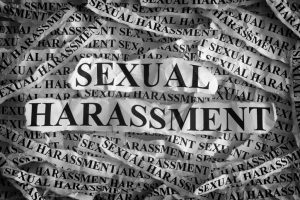It is a form of sex discrimination that may entitle the victim to file a legal claim.
Under Title VII of the Civil Rights Act of 1964 and the laws of all 50 states, sexual harassment is forbidden in the workplace. Most Americans understand that sexual harassment is against the law, but may not be able to define what exactly constitutes sexual harassment.
As a seasoned employment law attorney can explain, sexual harassment can include a number of behaviors. According to the Equal Employment Opportunity Commission (EEOC), sexual harassment is unwelcome sexual advances, requests for sexual favors, and other verbal or physical conduct of a sexual nature when:
- Submission to the conduct is a term or condition of an individual’s employment, either implicitly or explicitly;
- Submission to or rejection of the conduct is a basis for employment decisions;
- Conduct of a sexual nature has the purpose or effect of unreasonable interfering with work performance; and/or
- Conduct of a sexual nature creates an intimidating, hostile, or offensive working environment.
Importantly, the conduct must be unwelcome, which means that it is unwanted. If the victim does not want the sexual advances, requests for sexual favors or other verbal or physical conduct of a sexual nature, it is unwelcome — and it may be considered sexual harassment.
While most people view sexual harassment as something that only women are victims of, anyone can be sexually harassed — male or female. According to an experienced employment law attorney, the victim and the harasser may be the same sex or opposite sex. Harassers can be a supervisor, coworker, client, or customer.
Any number of behaviors might be considered sexual harassment, depending on the situation and the people involved. For example, displaying explicit material at your work station or desk may be sexual harassment in certain contexts. Similarly, if a person touches a co-worker or brushes up against them (not accidentally), that could be considered sexual harassment. There are other, perhaps more obvious examples, like a supervisor demanding sexual favors in exchange for a favorable work schedule, or a coworker attempting or completing a sexual assault.
There are two primary types of sexual harassment claims: quid pro quo and hostile work environment. In quid pro quo cases, employment decisions, like being promoted, are based on an employee’s willingness to submit to sexual harassment. In hostile work environment cases, sexual harassment makes your work environment intimidating, hostile, or offensive. If you believe that you have been subjected to sexual harassment of any type, a knowledgeable employment law attorney can work with you to help you decide how to move forward.
As the #MeToo movement has highlight, sexual harassment is pervasive in our society — even in 2018. While workplaces are making strides, there is still a substantial amount of wrongful conduct taking place. One way to hold employers accountable is through taking legal action.
At PLBH, we are dedicated to helping employees who have been harmed at work through harassment, wrongful termination, and other conduct. We are fierce advocates for our clients, and will work collaboratively with you to help you achieve justice. To learn more or to schedule an appointment with a skilled employment law attorney, contact us today at (800) 435-7542 or info@plblaw.com.

